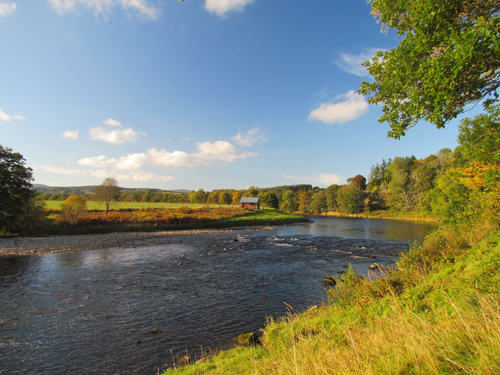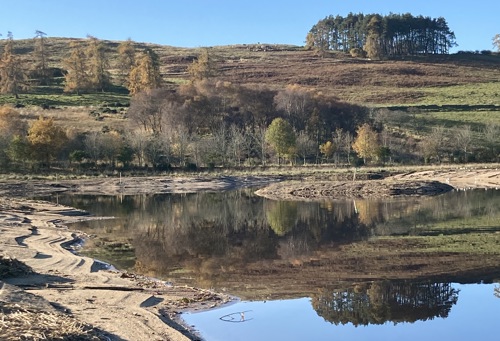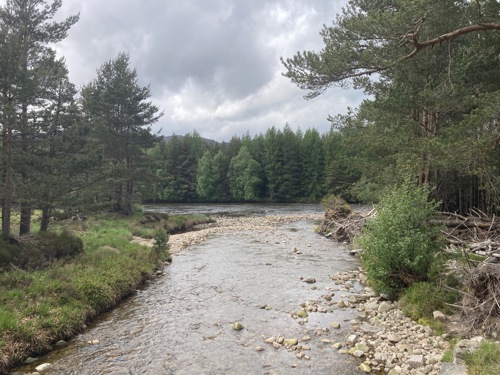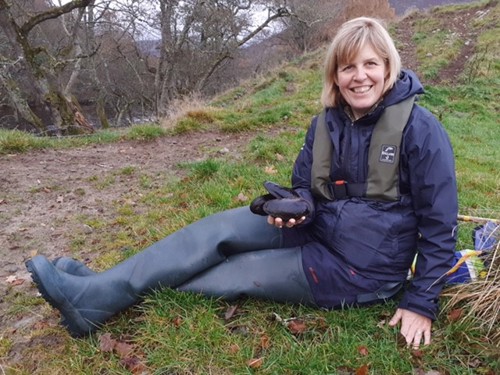Large-scale conservation work across the Dee catchment has been given the green light thanks to a major cash injection of over half a million pounds.
Dee Catchment Partnership
August 19, 2021
A variety of projects comprising floodplain restoration, woodland expansion and peatland restoration will benefit both people and nature, boosting the region’s resilience to climate change, while improving habitats for biodiversity.

As part of a network of 22 projects across the Cairngorms National Park totalling some £43 million of funding from several sources including the National Lottery Heritage Fund and Scottish Government, the work in the Dee, Spey and Esk catchments will comprise a two-year development phase, to drive projects forward to a ‘shovel-ready’ stage, followed by a five-year delivery phase of action on the ground.

Dr Susan Cooksley
Manager of the Dee Catchment Partnership and freshwater ecologist with the James Hutton Institute, Dr Susan Cooksley, will be spending a substantial part of her working week on the river restoration projects. She explains: “This is fantastic news for the green recovery of Deeside and the Cairngorms National Park. We’ve been proud to undertake some great restoration work recently at the Easter Beltie near Torphins, and on the Muick higher up the valley, and this funding will enable even more extensive, landscape-scale restoration, the like of which we’ve not seen since the Pearls in Peril project of 2015.”

The restored meandered Beltie Burn near Torphins
River restoration involves managing a river and its tributaries to reinstate natural processes that will restore biodiversity, for the benefit of people and wildlife, as Susan explains: “The Dee is recognised the world over as an important habitat for Atlantic salmon, freshwater pearl mussel and otter, and is a designated Special Area of Conservation specifically to protect these populations – which means that any proposed works in the area must give special consideration to these natural habitats. But species such as salmon and the pearl mussel are now significantly diminished in the river, so restoration projects like re-meandering the Easter Beltie - which amongst many benefits brought rapid recovery for salmon at a local scale and will have extensive benefits further downstream - are more important than ever, as the climate warms and biodiversity struggles to adapt.”

The restored Garbh Alt tributary in the upper catchment, where the river has been re-connected with its floodplain through the creation of a naturalised alluvial fan
The funding will enable a variety of restoration activities in the Dee catchment, including reuniting areas of the river with its floodplain to reduce flood risk. The Dee valley will also benefit from the £17 million of woodland expansion and peatland restoration planned for the Park – hoped to deliver an additional 5,000 hectares of hill and riverside trees between 2023 and 2028, and restore around 4,625 hectares of peatland.
Senior Research Scientist at the James Hutton Institute, Rebekka Artz, specialises in peatland ecosystems and restoration. “Damaged peatlands contribute significant amounts to greenhouse gas emissions, and add particulate and dissolved carbon to rivers. These effects are worsened during periods of warmer weather and drought,” she explains. “My colleagues and I are monitoring these emissions from eroded peatlands in the upper Dee catchment, as well as the hydrology, before and after restoration work on the peatlands, to test whether restoration reduces carbon emissions and restores hydrological functioning.”

Sally Mackenzie
Conservation Officer for the Cairngorms National Park, Sally Mackenzie, worked with all three of the National Park’s river catchment partnerships to create an attractive bid for the ‘Nature Based Solutions’ component of the funding from the National Lottery Heritage Fund, and was instrumental in their success. “I’m delighted we have secured this funding for the National Park, and for Deeside. All three partnerships worked tirelessly to make their case for the urgent need for habitat restoration and increased climate resilience across the area, and our collective efforts have paid off. It’s vital that these funding opportunities continue so we can build on all the great work done so far, and help to create a climate-resilient National Park that serves the needs of both people and nature, helping Scotland to meet its international biodiversity commitments by 2030 and beyond.”
Adobe Acrobat Reader is the free, trusted leader for reliably viewing, annotating and signing PDFs.
Download Adobe Acrobat Reader





